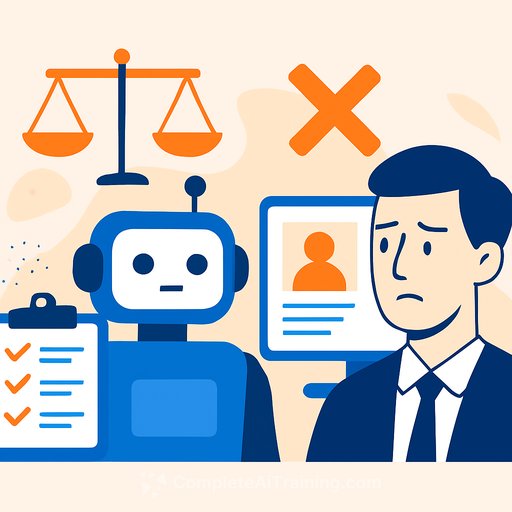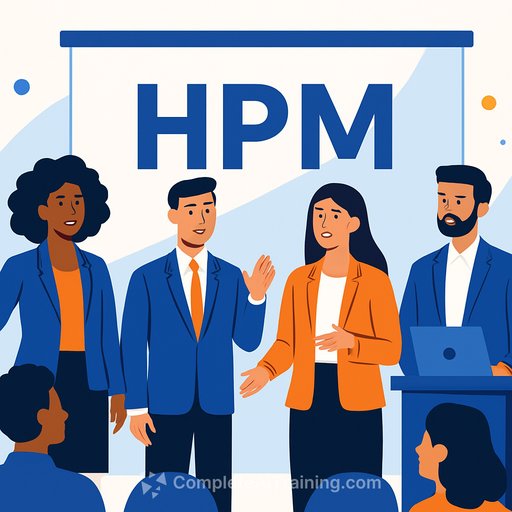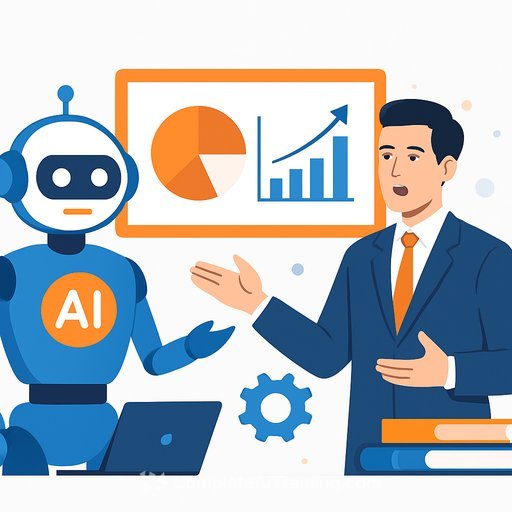Flawed Expectations: Unpacking the Potential of AI in HR
AI won't fix a broken hiring process, and it won't read minds. It will make strong HR teams faster, more consistent, and more data-driven - if you set the right scope. The gap between hype and reality is where budgets get burned.
This article sets clear expectations, shows where AI delivers real value, and gives you a simple plan HR can use without waiting on another committee.
Common expectations that break projects
- "AI will replace recruiters." It won't. It removes grunt work so recruiters can spend time on interviews, stakeholder management, and closing.
- "AI will pick the best candidate on its own." It ranks based on patterns in data you feed it. If your data is thin or skewed, results mirror that.
- "We'll save time on day one." You will after you map steps, clean inputs, and define review points. Skipping setup leads to rework.
- "AI is unbiased by default." No tool is. Bias checks, representative data, and human review are required.
- "It can judge culture fit." That's code for subjective calls. Keep AI on observable skills, history, and role needs.
- "One big platform will do everything." Start small. Point solutions for sourcing, screening, and knowledge help you learn faster.
- "Compliance is the vendor's job." Regulators expect employer oversight. Keep your own records, tests, and approvals.
Where AI actually helps HR
- Resume triage: Group and score applicants against must-haves and nice-to-haves with transparent reasoning.
- Sourcing: Draft outreach and surface lookalike profiles using skill-based search, not just titles.
- Job descriptions: Create clear, inclusive drafts aligned to competencies and pay bands.
- Interview support: Generate structured question sets tied to skills, plus scorecards that reduce guesswork.
- Candidate communication: Draft timely updates, rejections, and next steps that feel human.
- HR helpdesk: Answer policy questions from a vetted knowledge base with human fallback.
- Workforce planning: Build first-pass headcount and skills scenarios from historical data and pipeline health.
30-day pilots with clear outcomes
- Inclusive job description rewrite: Take 10 roles, rewrite with skills and inclusive language, and A/B test apply rates and quality.
- Resume shortlist assistant: Use an AI screen to produce top-20 lists with reasons. Recruiters must accept or edit, then compare time saved and interview pass-through.
- HR knowledge bot: Load benefits, leave, and policy docs. Track first-contact resolution and accuracy with spot checks.
Guardrails you need from day one
- Data scope: Define what the tool can and cannot use. Keep PII and medical data out unless strictly required.
- Human-in-the-loop: No automated rejections without review. Every AI decision should be auditable.
- Bias testing: Run pre- and post-implementation checks, including adverse impact ratio (80% rule) where applicable.
- Evaluation set: Use a fixed set of past roles and outcomes to test changes, then document results.
- Access control: Role-based access, logging, and retention rules that match HR policy.
- Vendor diligence: Ask for model behavior notes, data handling, retraining triggers, and opt-out of data reuse.
Metrics that prove value
- Time to shortlist: From req intake to first interview-ready slate.
- Candidate quality proxy: Interview pass-through rate and 90-day retention.
- Hiring manager satisfaction: Scorecards on relevance of shortlists and interviews.
- Candidate experience: Response times and drop-off between stages.
- Cost per hire: Agency spend, tool cost, and internal hours saved.
- Helpdesk accuracy: First-contact resolution and human escalation rate.
Prompts HR teams actually use
- Job description to skills: "From this job post, list core skills, level, and must-haves vs nice-to-haves. Flag unclear or biased phrases. Then suggest a concise rewrite."
- Resume screening: "Given this role profile, score each resume from 1-5 on the listed skills. Provide 3 bullet reasons and any deal-breakers. Output as a table."
- Interview guide: "Create a structured interview with behavioral and technical questions tied to these competencies. Add scoring rubrics and red flags."
- Candidate comms: "Draft a friendly status update for candidates at stage X. Keep it clear, respectful, and under 120 words."
- Policy Q&A: "Answer the employee question using only this policy text. If the answer isn't explicit, say what info is missing and advise contacting HR."
Simple process to keep bias in check
- Remove non-essential fields before screening (names, addresses, photos).
- Train reviewers on consistent use of scorecards and evidence-based notes.
- Run periodic audits comparing outcomes across demographics where legally allowed.
- Escalate any drift in pass-through rates or complaint spikes to your governance group.
Compliance and risk basics
Document what the tool does, how it was tested, and how humans review outputs. Keep change logs for prompts, settings, and data sources.
Review current guidance from the EEOC and your local regulators. Helpful starting points: the EEOC's initiative on AI and fairness and the NIST AI Risk Management Framework.
90-day rollout plan
- Days 0-30: Pick one use case, define success metrics, set guardrails, and run a shadow pilot. No automated rejections yet.
- Days 31-60: Expand to 2-3 roles or policies. Add bias checks, feedback loops, and manager training. Start reporting weekly.
- Days 61-90: Formalize SOPs, move from shadow to live for approved steps, and present impact to leadership with clear next steps.
What to ask vendors before you sign
- What data trains or tunes your system, and can we opt out of reuse?
- Show examples of errors and how users are warned or protected.
- How do you test for bias, and will you share test methods?
- What audit logs can HR export for regulators and legal?
- What happens if a model update changes outcomes without notice?
Upskill the team without the noise
A small, focused skill lift goes further than a big toolkit. Train recruiters and HRBPs on prompts, review discipline, and metrics they can own.
If you want structured options, see role-based learning paths and recent courses that focus on hiring, screening, and HR knowledge automation.
The bottom line
Set narrow goals, prove value fast, and keep a human in charge. AI won't make hard calls for you, but it will clear the busywork so your team can do the real work: fair hiring, clear communication, and stronger decisions backed by evidence.
Lower the expectations, raise the standards, and the results will speak for themselves.
Your membership also unlocks:






